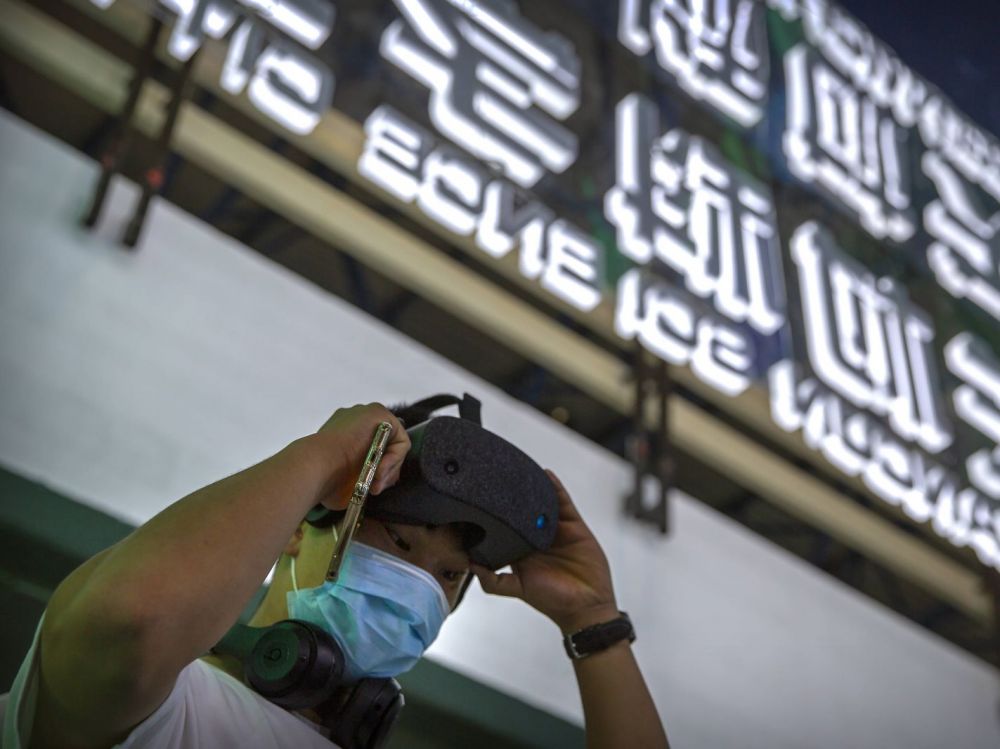
Mark Schiefelbein/AP/SIPA Chine high-tech
5 G, IA, Self-driving cars… Beijing’s next five-year plan plans to invest $ 1.4 trillion in new technologies within five years. A strategy directly linked to its trade war with Washington.
All the sinologists have noted that in recent weeks, Xi Jinping has invested in the economic field, until then rather occupied by his prime minister Li Keqiang, by bringing out a new concept: “dual circulation”. Integrated into the next five-year plan of the People’s Republic of China reviewed in October, the idea is to focus much more on internal demand (the second circulation) than on globalization (the first circulation), which has enabled Beijing to become the world’s factory.
And at the heart of this project, there is Tech. The Chinese president wants to invest 1.400 billion dollars in it by 2025. On the program: deploy 5G, install cameras and sensors everywhere, massively develop artificial intelligence in multiple projects, from autonomous cars to mass surveillance . Above all, China intends to reduce its dependence on foreign technologies, revealed by the measures taken by the United States to block technology transfers.
American crusade
Donald Trump has embarked on a crusade against Chinese high-tech, notably blocking the advance of Huawei, the 5G leader, whom he accused of espionage. The US administration has even banned Google from collaborating with the Chinese giant, which no longer has the ability to run the latest versions of Android on its phones. As a result, worried users tend to look to other brands to be sure they can download their favorite apps. Likewise, the United States wants to stop the export of chips to China to prevent the Chinese giants from introducing them into their products.
Express catch-up
At first, these measures hurt the Chinese economy. But the Middle Kingdom reacted and launched an unprecedented technological offensive: development of chips made in China, realization of an entirely Chinese operating system for telephones… This reconquest is already spectacular in components and semiconductors , which have long been China’s great weakness. Gone are the days when Beijing was content to simply assemble American chips in the manufacture of computers. Today, it manufactures its own chips to power its supercomputers and has computing power capable of rivaling the United States. Sunway TaihuLight, the most powerful Chinese supercomputer, is equipped with Chinese ShenWei chips. By preventing it from equipping itself with American, Taiwanese or Japanese chips, the United States has pushed Beijing to catch up at high speed.
Same trend in software. Because as long as its manufactured products have conquered the world for a long time, software has struggled to break out of the Middle Kingdom. But now, Chinese artificial intelligence programs no longer have to be ashamed: now Facebook is mimicking WeChat’s new ideas.
Gafa worried
To launch this reconquest, Beijing already has unparalleled research power in the world: according to the World Economic Forum, China trained 4.7 million engineers and scientists in 2016, when the United States did not train any. than 568,000. This capacity for innovation is such that the American tech giants are starting to worry. “China is overtaking us in many areas,” said Eric Schmidt, founder of Google, at a conference in Washington on August 25. It is run very effectively, but very different from the way we would like to be led. It will end up with a better economy, more investment in R&D, better research, wider applications of its technology and a stronger IT infrastructure. “
Challenge Fr
